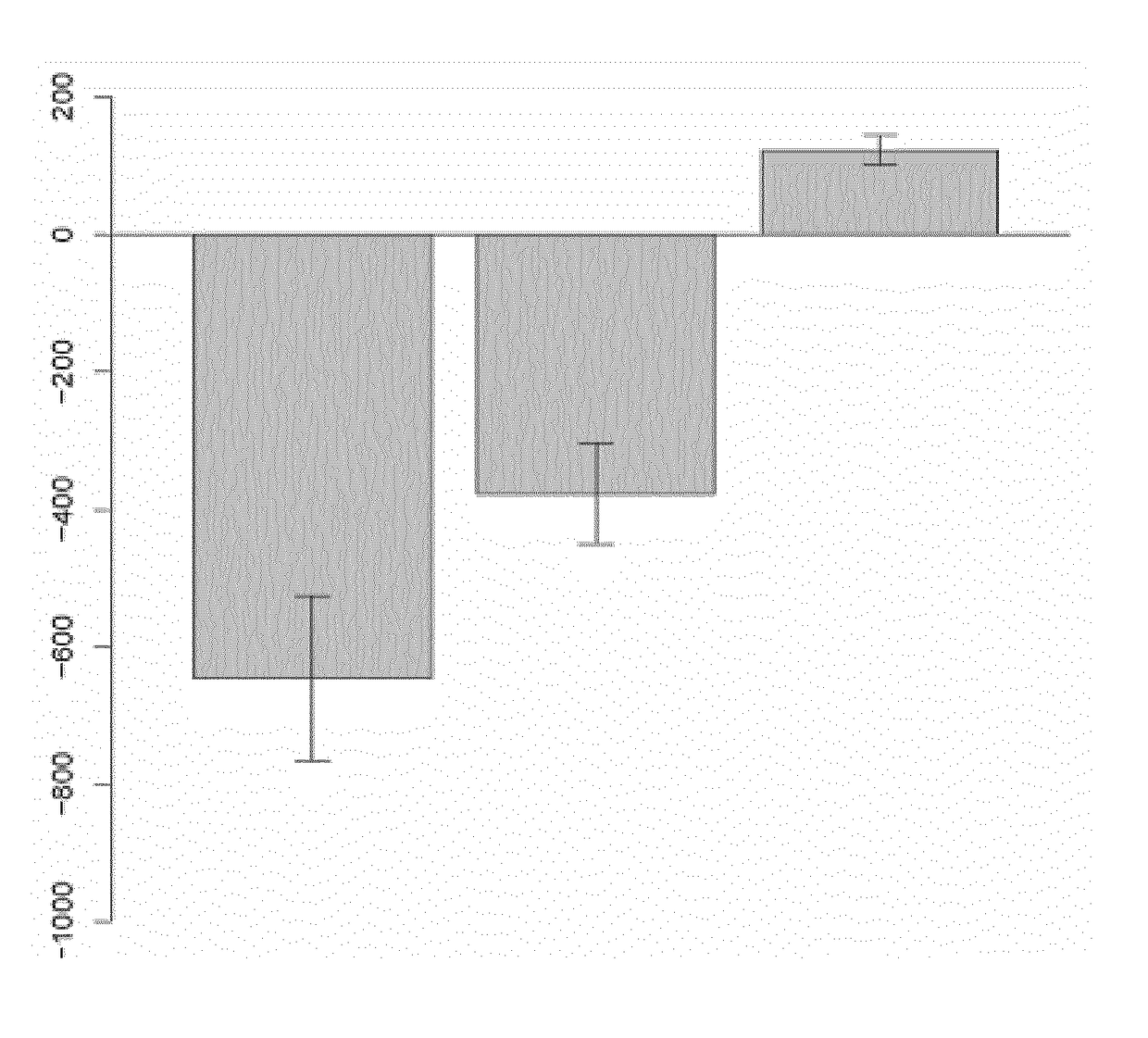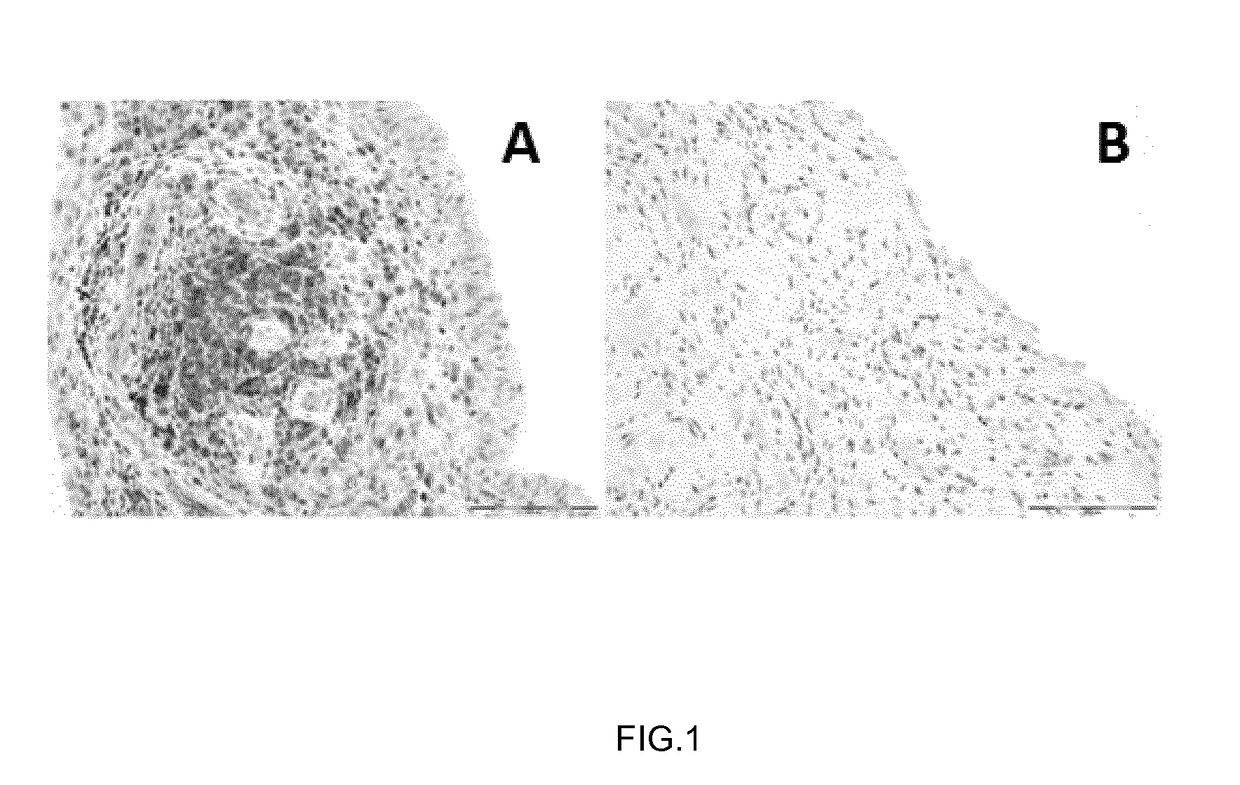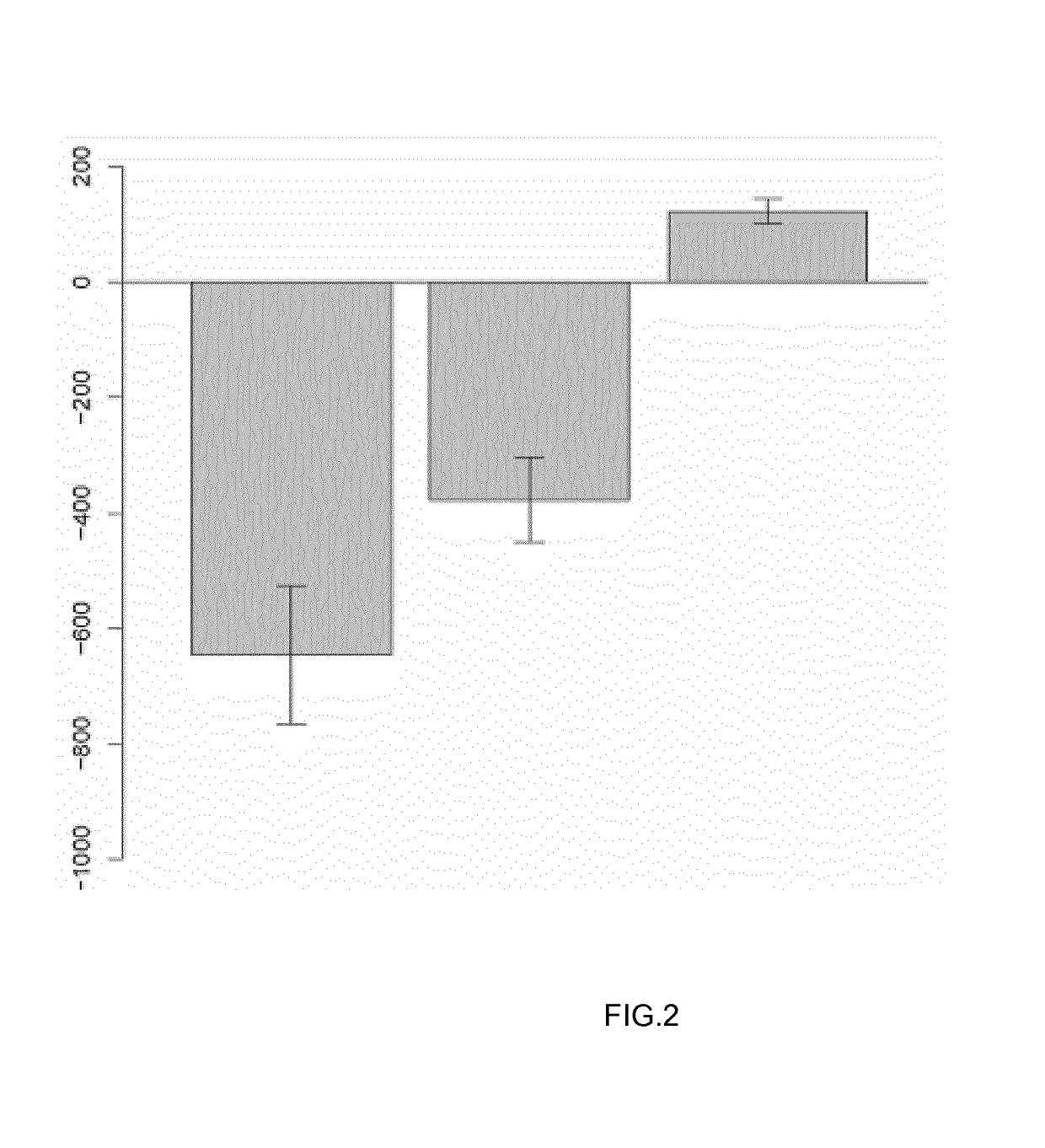Method to predict the lack of response to Anti-tnf alpha therapies
a technology of anti-tnf and alpha therapy, which is applied in the field of methods to predict the lack of response to anti-tnf alpha therapy, can solve the problems of lack of response in a subgroup of patients and treatment costs, inability of dmards to reduce inflammation and slow down the progression of disease, and high cost of anti-tnf therapy. , to achieve the effect of reducing the risk of recurrence, reducing the risk of recurr
- Summary
- Abstract
- Description
- Claims
- Application Information
AI Technical Summary
Benefits of technology
Problems solved by technology
Method used
Image
Examples
examples
A) Patients and Methods
Patients and Samples
[0057]Eleven patients (8 women, 3 men) fulfilling the American College of Rheumatology / European League Against Rheumatism 2010 criteria for RA (Aletaha, D. et. al. “2010 Rheumatoid arthritis classification criteria: An American College of Rheumatology / European League Against Rheumatism collaborative initiative” Arth. Rheumatol. 2010, vol. 62, pp. 2569-2581), with a basal mean Disease Activity Score in 28 joints (DAS28) (Prevoo M L., et. al. “Modified disease activity scores that include twenty-eight joint counts. Development and validation in a prospective longitudinal study of patients with rheumatoid arthritis”Arthritis Rheum. 1995, vol. 38, pp. 44-48) of 5.3 [4.2-6.9]) (median and interquartile range [IQR]), for whom an anti-TNF was prescribed by their rheumatologist (n=6 infliximab, n=3 adalimumab, n=2 etanercept), were enrolled in this study. Response to treatment defined by the EULAR response criteria (Fransen J., et. al. “The Disease...
PUM
| Property | Measurement | Unit |
|---|---|---|
| size | aaaaa | aaaaa |
| acid | aaaaa | aaaaa |
| width | aaaaa | aaaaa |
Abstract
Description
Claims
Application Information
 Login to View More
Login to View More - R&D
- Intellectual Property
- Life Sciences
- Materials
- Tech Scout
- Unparalleled Data Quality
- Higher Quality Content
- 60% Fewer Hallucinations
Browse by: Latest US Patents, China's latest patents, Technical Efficacy Thesaurus, Application Domain, Technology Topic, Popular Technical Reports.
© 2025 PatSnap. All rights reserved.Legal|Privacy policy|Modern Slavery Act Transparency Statement|Sitemap|About US| Contact US: help@patsnap.com



